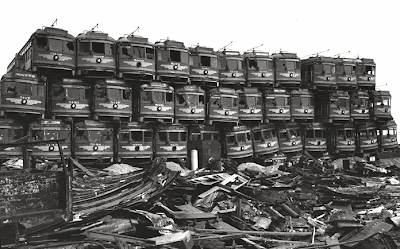Note, please: this is a post I co-wrote with Ryan Price while interning for CalBike. CalBike is working to mainstream bicycling in California and is really great. Check them out here.
Also, Faulconer won.
Who’s Running for Mayor in San Diego, and Why It Matters
It is crucial that the incoming mayor in San Diego
harness the momentum towards a more liveable city. In 2013, San Diegans
repeatedly demonstrated that they wanted liveability: DECO Bike Share passed unanimously and $200 million was front-loaded to SANDAG’s bicycle projects, which was the largest investment committed to bike infrastructure in the state.
The two major mayoral candidates, David Alvarez and Kevin
Faulconer, are facing the ends of their campaigns– and the race is
close. Both candidates have expressed support for smart growth and
making San Diego more liveable, and even participated in a Speaker Series hosted by the Livable Streets Coalition. Bike SD has endorsed Alvarez for mayor, and is even organizing a ride for him today. Our affiliate, the San Diego Bicycle Coalition hosted a Q & A with the candidates, but how do David Alvarez and Kevin Faulkner differ on their experience and plans for San Diego’s bikers and walkers?
David Alvarez: the Environmental Leader

Experience
Alvarez was born in the Barrio Logan community of San Diego and elected to the City Council
as a Democrat in 2010. He is Chair of the Natural Resources &
Culture Committee, Vice Chair of the Land Use & Housing Committee,
and a member of the Budget & Finance and Rules & Economic
Development Committees. As a Councilmember, he has supported affordable
housing, including COMM22, a
mixed-use transit-oriented development project. He has prioritized
infrastructure, such as by improving streetlights and street repair. He
has also worked to make San Diego more sustainable
by facilitating a coalition to develop the City’s plan for climate
change, and working for environmental justice in the polluted
neighborhood he comes from.
Mayoral Plans
As mayor, he has specific plans to make San Diego more liveable. He has pledged a commitment to Vision Zero,
which is an initiative to eliminate all preventable bicycling and
pedestrian deaths with multifaceted political strategies. He promises to
make San Diego a sustainable region by keeping SANDAG (San Diego’s regional planning agency) accountable. He has proposed $2.5 million for new parks (as much as 50 urban acres of parkland) and $1 million for bike facilities. He has expressed a commitment to the Pedestrian Master Plan,
Transit Oriented Development and Safe Routes to School. As he
explained, “We have the opportunity, through smart planning, careful
prioritization of resources, and a better long term vision, to rebuild
San Diego into the world-class city we know it can be.” He promises to
lead the City to get San Diegans passionate about biking and walking.
Kevin Faulconer: The Cycling Rival

Experience
Faulconer
has been a Republican Councilmember since 2006 and is now the Chair of
the Audit Committee. Like Alvarez, he has worked to improve San Diego’s infrastructure,
such as by investing in repaving streets, city parks, and improving
sidewalks. He championed the North Embarcadero Plan, which will make the
waterfront more pedestrian friendly. He supported sustainable
investment in city parks, as well as initiatives like Bike Share and the Bayshore Bikeway.
However, BikeSD chose Alvarez over Faulconer, in part,
because of how Faulconer bungled bicycling safety in District 2. As
BikeSD explains, “board member Nicole Burgess has had the opportunity to work with Faulconer and his staff
in addressing barriers to bicycling in District 2 for over three years.
However in the three years that Burgess has been involved in advocacy,
despite repeatedly highlighting the urgent need to make bicycling safe
on Nimitz Boulevard on the three critical blocks between Chatsworth and
Wabaska – Faulconer and his team have been unable to direct city staff
to make the needed improvements. In fact the improvements that were implemented were not requested
by the District 2 bike/pedestrian advisory committee or the Peninsula
Community Planning Board.” So can Faulconer be trusted to take necessary
action to make San Diego more liveable?
Mayoral Plans
As mayor, Faulconer plans to make sure the Bike Plan is
implemented with more dedicated bike lanes. He envisions a city where
every resident has the same access to “quality” streets and “safe” neighborhoods.When asked about how he plans to make San Diego more liveable, he responded, “Bottom line, let’s try something. Let’s see some action.”
While Faulconer does not give specifics about how he plans
to make San Diego more liveable, he does point out that he is a cyclist.
How close are they?
A Democratic poll from Public Policy Polling showed the race was a dead heat, with Alvarez leading Faulconer by just 0.1%.
Other polling, released on the same day by the San Diego Republican
party, showed Faulconer leading the race by 13 points. While San Diego
has more registered Democrats than Republicans, Republicans tend to vote more in special elections like this one.
Get Out The Vote
February 11th, ride your bike to the polls and vote for the
candidate that will do the most to make San Diego the livable city it
should be. Being that this is a special election, voter turnout will be low, so your vote is worth so much more. Help out by connecting with Bike San Diego and their efforts, because Getting Out the Vote is crucial for this election.



